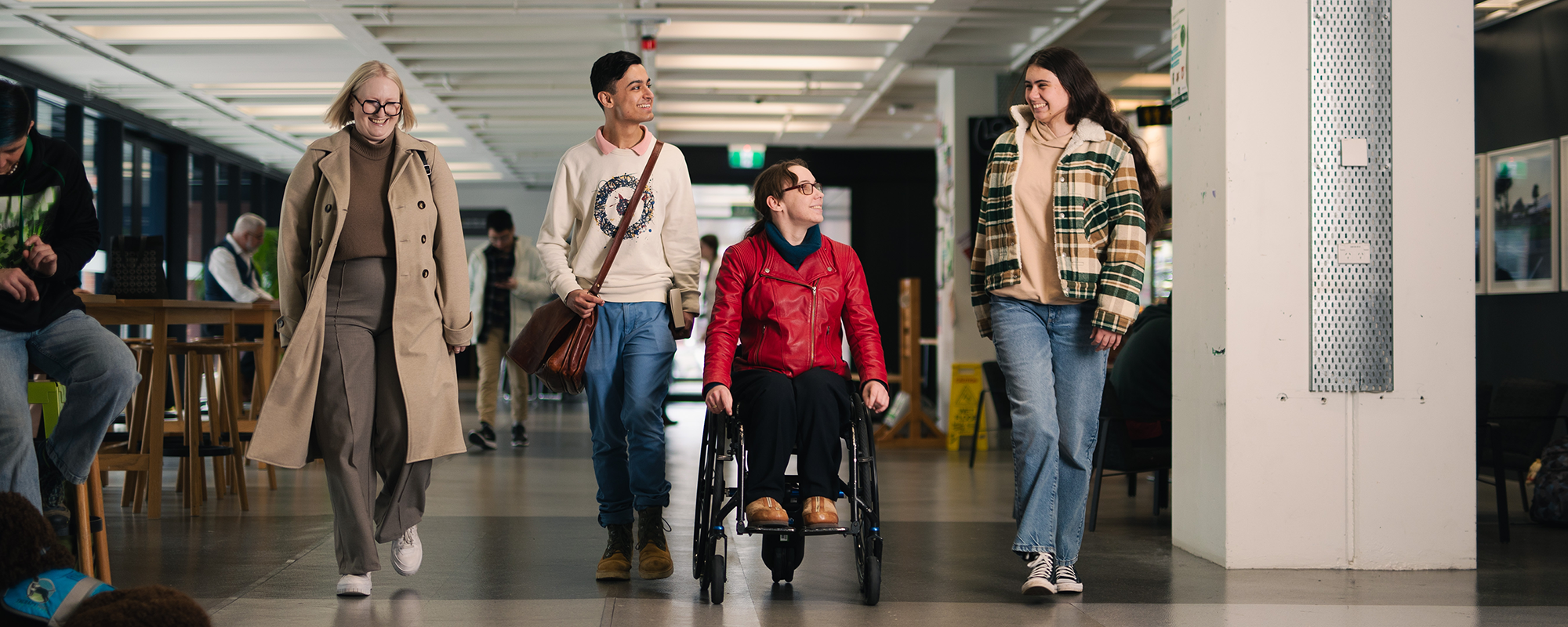Te tautahi i te whaikaha Disability at the University
We use the word disability with pride and confidence. Learn what the word disability means to us.
In line with the New Zealand Disability Strategy and wishes of the disability community, we use the word disability with pride and confidence. We value lived disability experience and celebrate our diverse University community, of which disabled people are an integral part. The language we use when talking about disability has evolved from a deficit approach to an inclusive one that welcomes diversity.
How we define disability is drawn from the Human Rights Act 1993, New Zealand Disability Strategy 2016-2026, United Nations Convention on the Rights of People with Disabilities 2008 and the ecological model of disability (Ebersold and Evans 2003).
We view disability as a diverse and complex phenomenon, reflecting an interaction between an individual and their environment. We recognise that disability comes in many different forms, is experienced differently by each individual. We respect the expertise that comes with lived disability experience and that disabled people can experience barriers when the environment, attitudes, policies, pedagogy, practices, communication, technology, built environment, and so on, are not disability inclusive.
Disability may be a temporary or long-term condition, illness or injury that affects a person’s learning, communication, concentration, memory, hearing, mobility, movement, speech and/or vision. This includes the Deaf community with their own unique language and culture.
In Te Ara Taupuhipuhi we use the terms: ‘disabled people,’ ‘disabled staff,’ ‘kaimahi whaikaha,’ ‘disabled students,’ ‘tauira whaikaha,’ with the strength of the New Zealand Disability Strategy and wishes of the disability community.
We recognise that not all members of our University identify with disability focused language and respect the very personal choices they make.
Ngā tūtohu o te mana taurite mō ngā ākonga whaikaha | Disabled students' equity indicators
In 2022, 2,389 students registered with Te Amaru—Disability Services as having a disability. This represented 10% of 2022 domestic enrolments. The number and percentage of disabled students has markedly increased from 1,505 in 2017 when our first Disability Action Plan was published. We greatly welcome the increasing presence of disabled students, which is above the national average for domestic university students in Aotearoa (8%). We can now say that our student community is representative of the Aotearoa New Zealand disability population for the general university student age demographic.
Achieving this level of representation enables the University to focus on increasing the diversity of the disabled student population, increasing academic achievement, and aspiring to full disability inclusion.
The diversity of our disabled student community has also increased since our first plan in 2017 with Māori registrations up 72% to 267 students in 2022 and Pasifika up 36% to 75 students registered in 2022.
In 2022 80% of all University students were aware of Te Amaru—Disability Services as measured by the 2022 Have Your Say Student Survey.
Successful course completion rates for students who declare a disability and engage with Te Amaru—Disability Services were 81.3% in 2022, 3.3% lower than the overall student completion rate of 84.6%.
Reporting on disability equity indicators is included in our annual ‘Equity Funding: Tertiary Students with Disabilities’ reports submitted to the Tertiary Education Commission. Reporting is provided at finer levels in Te Amaru—Disability Services annual report and for the purposes of the Disability Inclusion Action Plan reports to the Equity and Diversity Steering Group.

